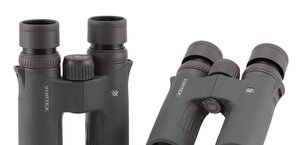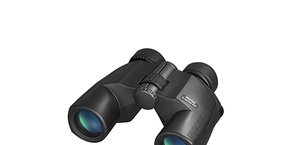All you want to know about binoculars but you are ashamed of asking
5. Age and binoculars...
Before the light get to our detector which in human’s case is retina, light has to pass through pupil which is nothing else but natural aperture - its behaving doesn’t differ from apertures applied in cameras lenses. Our pupil, by smooth changing its size, regulates light supply into our eyes. During a very bright sunny day our pupil can shrink itself to about one millimetre. When there is a very dark night, after about 15 minutes getting the sight accustomed to darkness, pupil of young man is able to achieve even 7 millimetres diameter (see the picture below).

Please Support UsIf you enjoy our reviews and articles, and you want us to continue our work please, support our website by donating through PayPal. The funds are going to be used for paying our editorial team, renting servers, and equipping our testing studio; only that way we will be able to continue providing you interesting content for free. |
- - - - - - - - - - - - - - - - - - - - - - - - - - - - - - - - - - - - - - - - - - - - - - - -
Human pupil’s behaviour is individual feature and also depends on a given age. Young people (let’s say up to 40-45 years old) usually don’t have problems with achieving a maximum size of pupil which comes to about 7mm. After 40-45 it is more and more hard to achieve 7 mm and after 50-55 years old, the maximum pupil diameter, rarely goes beyond 5 mm.
Why pupils behaviour is so important when we consider buying binoculars? Well when you want to take a full advantage of purchased binoculars, you need to know how much light will be able to get into our retina. It is only possible when a disk of light (so called exit pupil), produced just after eyepiece lens, will entirely fit in our pupil. In other words binoculars exit pupil should be the same size as our pupil or smaller. Otherwise a part of gathered by a lens light is wasted and we doesn’t take a full advantage of given binoculars.
Because of that fact, people who want to use their binoculars mainly in daylight, they shouldn’t buy 7x50 or 8x56 binoculars. By dint of 7mm exit pupil, they are destined for using in low light conditions. Suppose that during a normal day, size of our pupil is 4mm. At the same time, using 8x56 binoculars, 67% of light gathered by a lens, doesn’t reach our eye and doesn’t get into it. It’s wasted! We would obtain the same image, with regard to resolution as well as gathering light, by 8x32 binoculars! In short, there is no reason, in this case, to buy bigger, heavier and more expensive 8x56 binoculars.






